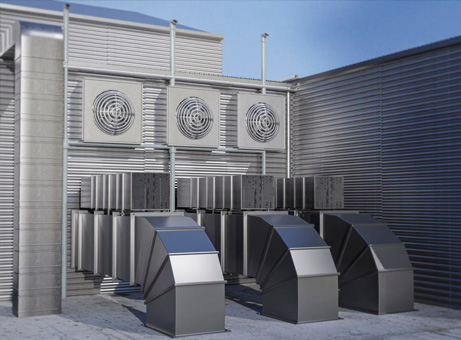Overview
Solution from Cisco
Cisco Physical Security solutions provide broad network-centric capabilities in video surveillance, IP camera technology, electronic access control, and incident response. Cisco Physical Security solutions integrate with other Cisco and partner technologies to provide a unified interface that gives safety personnel a higher level of situational awareness and allows intelligent decisions to be made more quickly. Customers can build cost-effective, modular physical security solutions that are both best-in-class and interoperable.
Combining video surveillance, access control, and incident response, Cisco Physical Security solutions are easy to manage and easy to support. And because they’re based on open standards, you can easily integrate Cisco solutions with products from Cisco partners to meet your specific requirements. With deployments in industries such as education, municipalities, transportation, airports and ports, retail, healthcare, and more, Cisco Physical Security solutions meet the uncompromising needs of today’s safety and security professionals.
Cisco Video surveillance, IP camera are feature – rich digital cameras that enable surveillance in a wide variety of environments. Available in standard and high-definition, box and dome, wired and wireless, and stationery and pan-tilt-zoom(PTZ) and offer efficient network utilization while providing high-quality video.
Products: Video Analytics, Cisco Video Surveillance Media Server, Cisco Video Surveillance Operations Manager, Cisco Physical Security Operations Manager,
Cisco Physical Access Control is scalable and flexible, able to manage from one to several thousand doors. Customers can combine modules to customize solutions and can manage the entire system remotely. This solution easily integrates with Cisco Video surveillance and can use IP network services.
Products: Cisco Physical Security Operations Manager, Cisco Physical Access Manager
Cisco IP Interoperability and Collaboration System (IPICS) is a comprehensive IP-based dispatch and incident response solution. By sending radio traffic over an IP network, Cisco IPICS cost-effectively enables public information when they are using incompatible radios. Cisco IPICS allows push-totalk communications on radio handsets, networks, laptop and PC clients, telephones, and mobile phones, improving response times and resource collaboration.
Products: Cisco IPICS Dispatch Console, Cisco IPICS Mobile Client
Solution from AXIS
Our partner company Axis is the world leader in network video and offers a wide portfolio of products for professional video surveillance.
Video surveillance often also called IP-based network video or IP-Surveillance as it is applied in the security industry, uses a wired or wireless IP network as the backbone for transporting digital video, audio and other data. When Power over Ethernet (PoE) technology is applied, the network can also be used to carry power to network video products.
A network video system allows video to be monitored and recorded from anywhere on the network, whether it is, for instance, on a local area network (LAN) or a wide area network (WAN) such as the Internet.
The core components of a network video system consist of the network camera, the video encoder (used to connect to analog cameras), the network, the server and storage, and video management software. As the network camera and the video encoder are computer-based equipment, they have capabilities that cannot be matched by an analog CCTV camera. The network camera, the video encoder and the video management software are considered the cornerstones of an IP-Surveillance solution.
The network, the server and storage components are all standard IT equipment. The ability to use common off-the-shelf equipment is one of the main benefits of network video. Other components of a network video system include accessories, such as camera housings and PoE midspans and active splitters.
Benefits
The digital, network video surveillance system provides a host of benefits and advanced functionalities that cannot be provided by an analog video surveillance system. The advantages include remote accessibility, high image quality, event management and intelligent video capabilities, easy integration possibilities and better scalability, flexibility and cost-effectiveness.
Remote accessibility
Network cameras and video encoders can be configured and accessed remotely, enabling multiple, authorized users to view live and recorded video at any time and from virtually any networked location in the world. This is advantageous if users would like a third-party company, such as a security firm, to also gain access to the video. In a traditional analog CCTV system, users would need to be at a specific, on-site monitoring location to view and manage video, and off-site video access would not be possible without such equipment as a video encoder or a network digital video recorder (DVR). A DVR is the digital replacement for the video cassette recorder.
High image quality
In a video surveillance application, high image quality is essential to be able to clearly capture an incident in progress and identify persons or objects involved. With progressive scan and megapixel technologies, a network camera can deliver better image quality and higher resolution than an analog CCTV camera.
Image quality can also be more easily retained in a network video system than in an analog surveillance system. With analog systems today that use a DVR as the recording medium, many analog-to-digital conversions take place: first, analog signals are converted in the camera to digital and then back to analog for transportation; then the analog signals are digitized for recording. Captured images are degraded with every conversion between analog and digital formats and with the cabling distance. The further the analog video signals have to travel, the weaker they become.
In a fully digital IP-Surveillance system, images from a network camera are digitized once and they stay digital with no unnecessary conversions and no image degradation due to distance traveled over a network. In addition, digital images can be more easily stored and retrieved than in cases where analog video tapes are used.
Event management and intelligent video
There is often too much video recorded and lack of time to properly analyze them. Advanced network cameras and video encoders with built-inintelligence or analytics take care of this problem by reducing the amount of uninteresting recordings and enabling programmed responses. Such functionalities are not available in an analog system.
Axis network cameras and video encoders have built-in features such as video motion detection, audio detection alarm, active tampering alarm, I/O (input/output) connections, and alarm and event management functionalities. These features enable the network cameras and video encoders to constantly analyze inputs to detect an event and to automatically respond to an event with actions such as video recording and sending alarm notifications.
Event management functionalities can be configured using the network video product’s user interface or a video management software program. Users can define the alarms or events by setting the type of triggers to be used and when. Responses can also be configured (e.g., recording to one or multiple sites, whether local and/or off-site for security purposes; activation of external devices such as alarms, lights and doors; and sending notification messages to users).
Easy, future-proof integration
Network video products based on open standards can be easily integrated with computer and Ethernet-based information systems, audio or security systems and other digital devices, in addition to video management and application software. For instance, video from a network camera can be integrated into a Point of Sales system or a building management system.
Scalability and flexibility
A network video system can grow with a user’s needs. IP-based systems provide a means for many network cameras and video encoders, as well as other types of applications, to share the same wired or wireless network for communicating data; so any number of network video products can be added to the system without significant or costly changes to the network infrastructure. This is not the case with an analog system. In an analog video system, a dedicated coaxial cable must run directly from each camera to a viewing/recording station. Separate audio cables must also be used if audio is required. Network video products can also be placed and networked from virtually any location, and the system can be as open or as closed as desired.
Cost-effectiveness
An IP-Surveillance system typically has a lower total cost of ownership than a traditional analog CCTV system. An IP network infrastructure is often already in place and used for other applications within an organization, so a network video application can piggyback off the existing infrastructure. IP-based networks and wireless options are also much less expensive alternatives than traditional coaxial and fiber cabling for an analog CCTV system. In addition, digital video streams can be routed around the world using a variety of interoperable infrastructure. Management and equipment costs are also lower since back-end applications and storage run on industry standard, open systems-based servers, not on proprietary hardware such as a DVR in the case of an analog CCTV system.
Furthermore, Power over Ethernet technology, which cannot be applied in an analog video system, can be used in a network video system. PoE enables networked devices to receive power from a PoE-enabled switch or midspan through the same Ethernet cable that transports data (video). PoE provides substantial savings in installation costs and can increase the reliability of the system.





